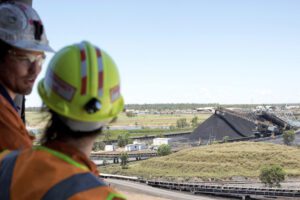OPINION Dave Whitefield writes ….Now, I’m going to drastically oversimplify workplace safety here, but essentially I would like to put forward a case.
To achieve great safety outcomes we only need to look at three things –
- Having a risk-managed workplace (including plant and equipment);
- Implementing great systems that formalise our approach to managing risk; and
- Have informed, skilled people making safe decisions.
So how does that sound, look or feel (I like to cater for different learning styles)? I find that when I present this basic concept to pretty much anyone it seems to go over pretty well. Of course, I can’t claim I invented this as the basis for the model has been around forever, I have just tweaked it a little in the way I present and use it.
What this basic model does give us though is a bit of an insight into the history of workplace safety and, in my opinion, why we are finding it so hard to crack through to the next level. Put simply we’ve done risk and systems to, well, death (poor choice of word there I know).
READ RELATED CONTENT
- Autonomous technology training and why it’s important(Opens in a new browser tab)
- Weak and Invisible Safety Leadership?(Opens in a new browser tab)
- Role of Safety and Health Representatives in Western Australian mining(Opens in a new browser tab)
We pretty much understand the issues. We generally know what hurts us, and we know how to develop pretty good systems. I know there are exceptions, but generally, those things don’t stump us in terms of managing them. What we are not great at however is the people side of things.
THE RISE (AND FALL) OF BEHAVIOURAL SAFETY
And so as we came to realise this within workplace safety we started looking for people-centred solutions. We started to talk about things like ‘safety culture’ and ‘safety leadership’ (interestingly we talk about these things still today as if they are separate from culture and leadership in general, but that’s a story for another edition).

We started to use different language like ‘commitment versus compliance approach’. We started to use temporal models to describe where an organisation was in terms of its safety culture development. But has it worked?
IT’S A DIFFERENT SKILL SET
Well, I’m no not sure, and certainly not yet anyway, and definitely not broadly across the working population. I believe that one of the main issues is that the specific knowledge and skills needed to identify and assess risk are potentially very different to those needed to write a great procedure or interpret a Standard, and in turn the skills needed to influence people’s behaviour are very different to the skills needed in the other areas.
I’m not saying you can’t have them all, but I’m saying it is ridiculous to assume that someone will automatically have them all, or automatically be great at them all. Especially just because you have the word ‘safety’ in your title, or just because you are a manager or supervisor.
I think we have been looking for the next great behavioural safety solution when the solution wasn’t about other people, it was about us, and our ability to communicate with, and influence, others.
WE ARE NOT BORN WITH PEOPLE SKILLS
We seem happy to teach people how to do a risk assessment or how to interpret a Safety Data Sheet, but we don’t seem to have an appetite for teaching people skills. We assume our supervisors can effectively engage with a person and have a meaningful conversation because it’s in their job description.
So because we don’t value it, we don’t teach it. Because we don’t teach it people don’t always have the skills, and because we don’t have the skills we are not always good at (pro-actively) influencing other people. We often find it exceptionally hard having conversations about safety.
We find it hard to stop and correct someone about their unsafe behaviour. We find it unbelievably hard to speak up and stop unsafe work despite being told we can under our workplace safety system.
I mean, why is that? Is it because they simply don’t believe it? If so, that tells me it’s because their leadership don’t know how to convince people they should. They don’t have the skills to actively influence other people’s beliefs.
FINAL WORD ON MAKING SAFER CHOICES
Engaging with, and pro-actively influencing, other people can be hard. It requires new skills that we may not yet have. It can be uncomfortable and potentially embarrassing. It’s new and different. But to be honest, we’ve done the easier stuff. We’ve tackled the low hanging fruit.
We know that influencing people to make safer choices is what is needed next. I don’t think we need more fancy models or programs. I think we need to value basic conversation skills and engage with people. Yes it’s hard, but that’s OK because it’s worth it. We are talking about people after all.
“We find it hard to stop and correct someone about their unsafe behaviour. We find it unbelievably hard to speak up and stop unsafe work despite being told we can.”
Read more Mining Safety News














Add Comment